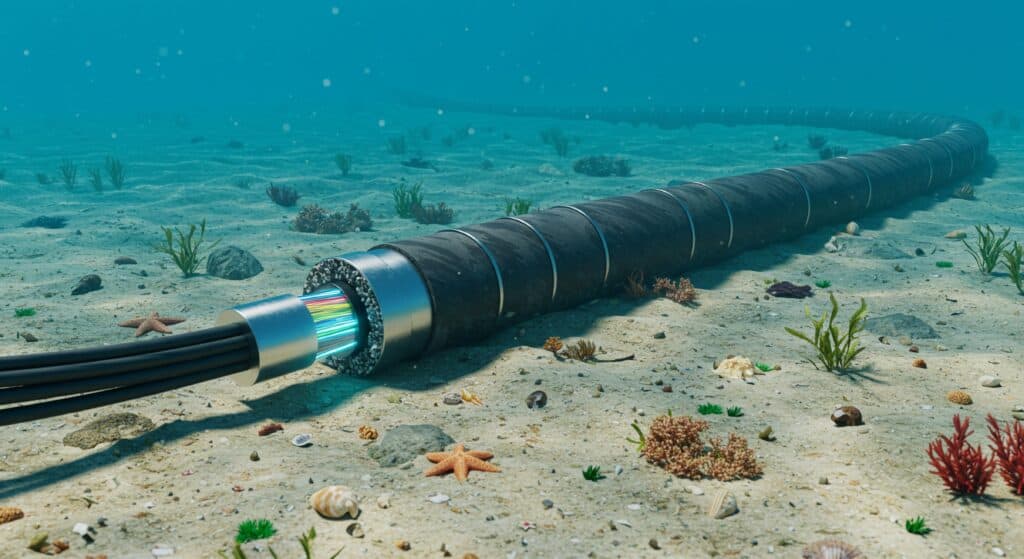Modernizing Subsea Cable Oversight: The FCC Responds to Industry Needs

Submarine cables are the invisible infrastructure powering our digital world. They carry 99% of intercontinental internet traffic and support over $10 trillion in daily financial transactions. Yet, despite their critical importance, the time it takes to land these cables in the United States has increased dramatically. In the past five years, the licensing timeline has stretched from around nine months to, in some cases, well over three years. This delay complicates efforts to deploy new cables that provide essential redundancy and resiliency, especially in light of recent high-profile cable breaks.
The Federal Communications Commission (FCC) plays a central role in shaping the regulatory framework that governs these deployments. On August 7, the Commission adopted a Report and Order and Further Notice of Proposed Rulemaking (FNPRM) aimed at modernizing its submarine cable landing license rules. This action builds on an earlier Notice of Proposed Rulemaking issued at the end of the Biden Administration under Chairwoman Jessica Rosenworcel, which TIA commented on raising some concerns with the direction the FCC was considering. The newly adopted item reflects the Commission’s responsiveness to industry concerns about inefficiencies in the current submarine cable licensing process.
Reducing Regulatory Burdens While Preserving Investment Certainty
The FCC’s new item reflects a growing recognition of the need to balance national security with deployment efficiency. The Report and Order introduces updated rules to strengthen oversight and security, while the FNPRM seeks public input on proposals that could streamline the licensing process and reduce regulatory burdens.
Among the most notable proposals in the FNPRM:
-
Streamlined Review for Trusted Equipment and Countries: The FNPRM also explores ways to streamline the review process for applications involving trusted equipment and connections to allied countries. Although it stops short of proposing a formal “frequent flyer” program, the Commission expresses a clear intent to minimize redundant reviews and ease regulatory burdens for low-risk applicants — potentially opening streamlined pathways for entities with prior Team Telecom vetting or proven compliance histories.
-
Preservation of the 25-Year License Term: By preserving the 25-year license term, the FCC reinforces regulatory certainty for industry—acknowledging that upfront investment often exceeds $400 million before the licensing process even begins, and that shortening the term could risk deterring future deployment.
Why These Changes Matter
Because subsea cable systems are so vital to global communications, it is important that global subsea cable network is resilient. From natural disruptions and fishing trawler accidents to cyber threats and adversarial interference, the risks are real and growing, and the more redundant these cables are, the less disruptive these breaks are. That’s why a regulatory framework that supports timely deployment and robust security is essential to maintaining U.S. leadership in digital infrastructure.
The FNPRM’s proposals reflect a thoughtful approach to modernizing the licensing process. By differentiating between high-risk and low-risk applications, the FCC can better allocate resources and reduce bottlenecks. And by recognizing the value of trusted vendors and repeat applicants, the Commission is signaling a willingness to evolve its processes in line with industry realities.
What Comes Next?
The FNPRM opens the door for further public input, and stakeholders across the telecommunications ecosystem will have an opportunity to weigh in. As the FCC continues to refine its rules, it’s clear that the direction is toward a more agile, secure, and investment-friendly framework.
TIA looks forward to engaging in this next phase of the proceeding and offering comments on the proposals outlined in the FNPRM. The Commission’s efforts to modernize submarine cable licensing are a welcome step toward ensuring that the U.S. remains a global leader in secure and resilient communications infrastructure.
Anyone interested in contributing to TIA’s policy comments or engagement efforts is encouraged to connect directly via membership@tiaonline.org. It’s a great way to stay involved in shaping industry perspectives and advancing collaborative initiatives.
